You could say that Pittsburgh artist Stefanie Zito’s work is multidisciplinary, but that would be an understatement. She grows her own natural dye plants as a certified permaculture designer. She dyes her own fiber and fashions it into three-dimensional weavings.
Pittsburgh Artist Stefanie Zito Showcases Natural Dyes
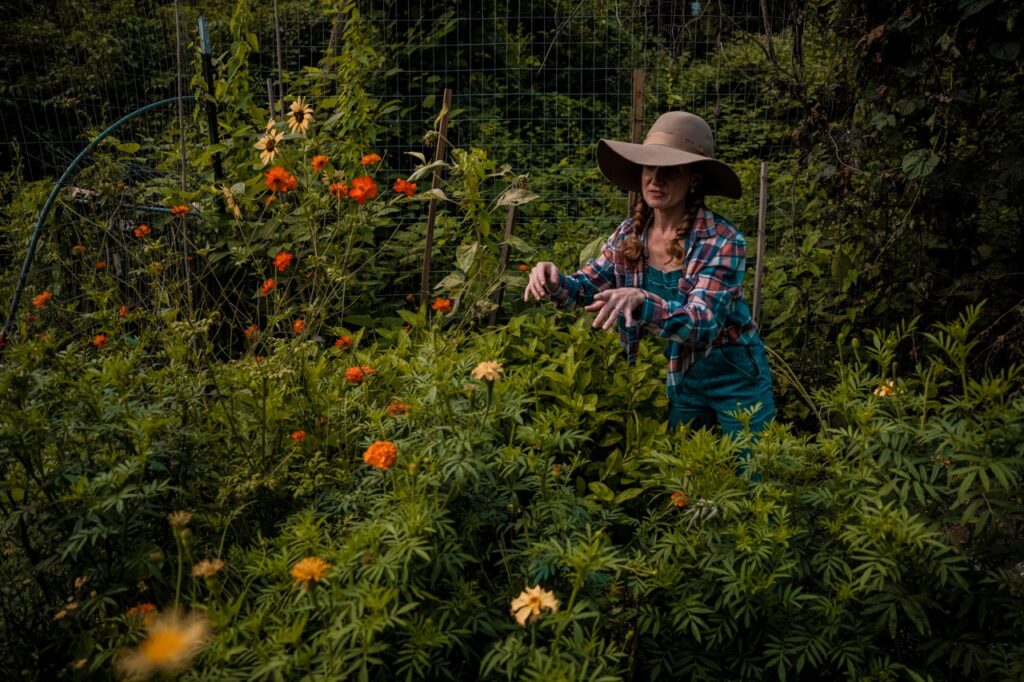
Stefanie tending to dyer’s cosmo and marigolds, which make natural dye shades of yellow and orange.
Two things stand out from my interviews with mixed media artist Stefanie Zito. First, she returns constantly to themes of time and place. Time becomes an essential element in the very construction of her structures, weavings, paintings and performances, while place is expressed in the origin of dye materials as well as the final appearance of every piece.
As we talk, she refers to time over and over again: the passing of time, savoring time, limited time, ephemeral time, the arc of time, the allotment of time, all merging with the idea of place where one can build a foundation of permanence. Roots. If home could be a study, a place-based deep-dive into self-change, then it is here in Pittsburgh that Stefanie is getting to the core of what she wants to say as an artist.
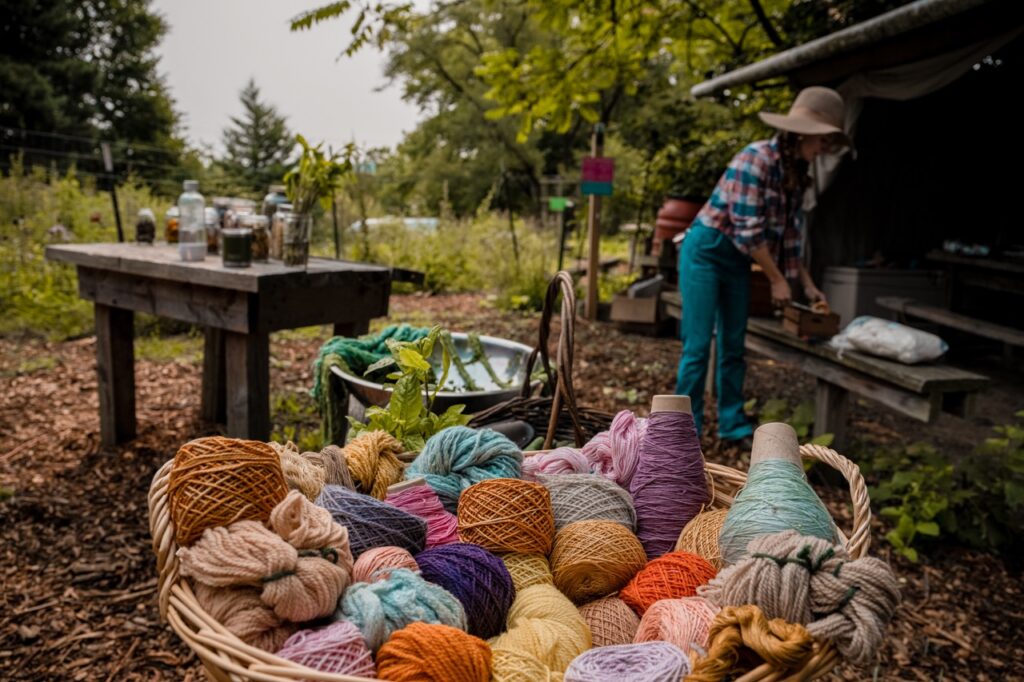
A basket of Stefanie’s naturally dyed yarns.
How Stefanie Got Her Eco Start
To move forward with this story, it’s important to step back for some context on the artist. Born in Chicago, Stefanie moved around the world her whole life, led by her dad who worked for a company that had international partnerships. With no real hometown to call her own, Pennsylvania has inherently been part of her DNA: her dad’s family also hails from the western part of the state. When she first landed in Pittsburgh, she wasn’t thinking she would stay. Five years being the most she usually spends in one place. Her time here has lasted much longer, and the clock is still running.
Though she is grateful for her eclectic upbringing and seeing much of Europe for half of her childhood, the constant uprooting trained her to constantly let go. “I didn’t even have house plants,” she says of the fear of keeping something sustained.
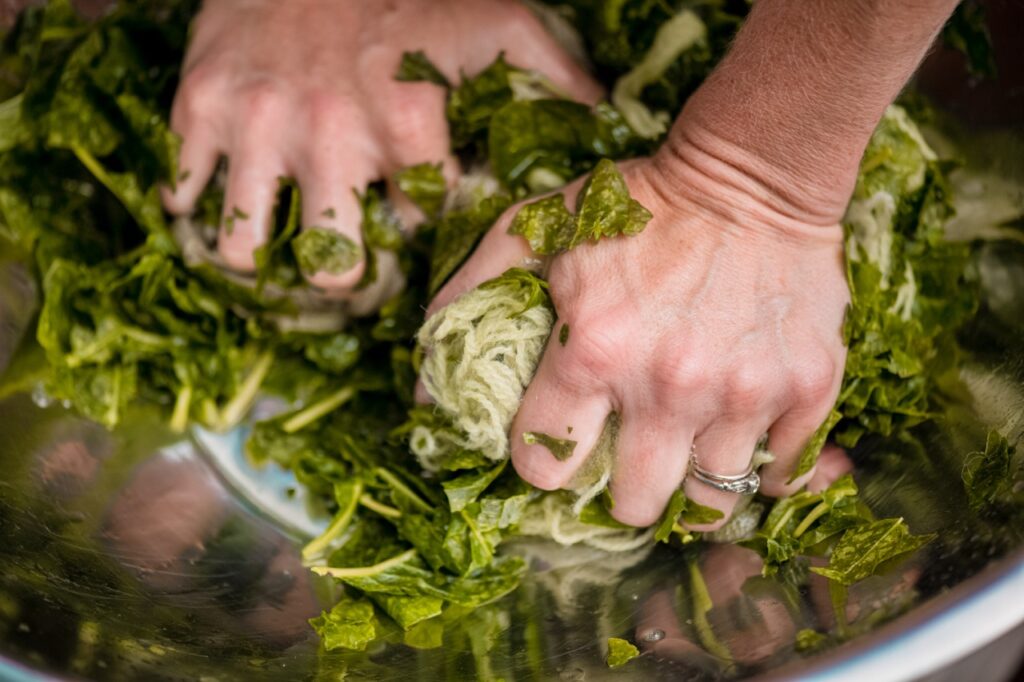
Stefanie at work with raw indigo.
This seems incredibly ironic to find her today thriving as a certified permaculture designer who grows dye plants for her three-dimensional weavings at Garfield Community Farm. Over the past decade Garfield Community Farm has been restoring nearly three acres of abandoned and degraded urban land to become one of Pittsburgh’s most productive and active urban farms. “I have been connected with the farm with varying degrees of involvement since the very beginning when it was merely a seed of an idea, if you will,” she says smiling.
Using the Fruits of the Earth
In the summer, she harvests several go-tos for natural dyers: orange from marigolds, cosmos, and coreopsis for oranges; Dyer’s Chamomile and weld for yellows; black hollyhock, black knight scabiosa, Hopi sunflower, and indigo for blues and purples. “Next year I am adding madder root as the farm confirmed they’d be happy to host a plant with a longer time investment,” she says, adding that color-filled food scraps like onion and avocado are also part of her natural dye arsenal.
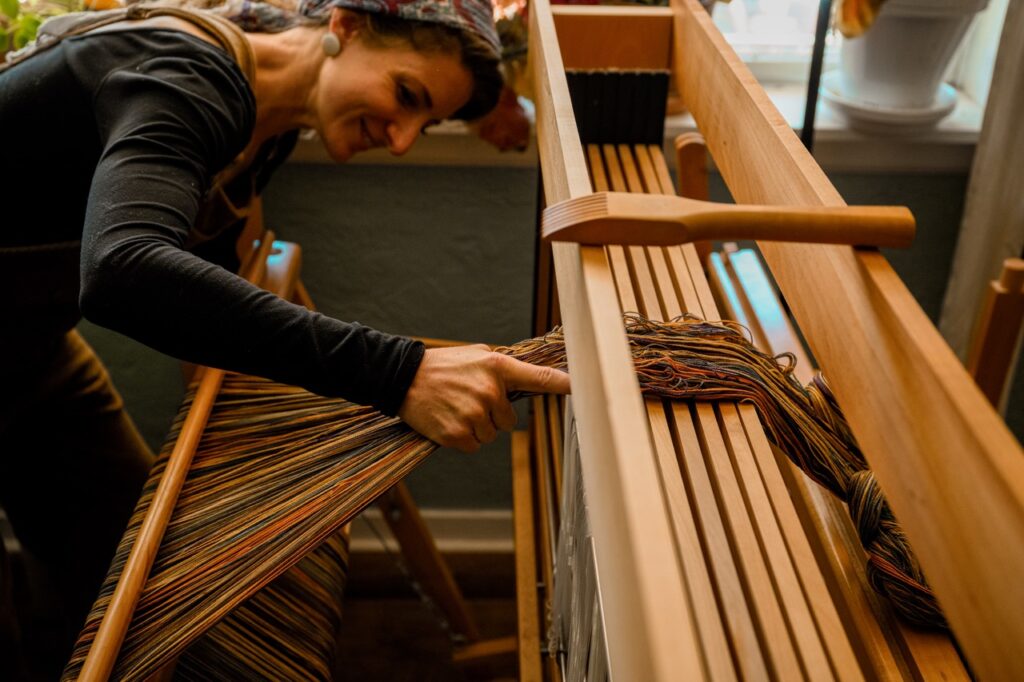
Preparing a loom with naturally dyed yarns.
“The dye plants I am growing at the farm have so many colors that add depth to my weaving,” she says. “I have long had this feeling something big is coming through my art from the permaculture work I’ve been doing, and I really want to capture it in a weaving.”
Fashioning Dyes Into an Sculpture
Much of her current work takes shape as fiber sculptures with titles highlighting moments in time like Between Mysteries, Life is Wide, Situated, and Interval. The sculptures are constructed on her loom with a double weave technique, a process involving weaving two layers simultaneously, with the layers frequently exchanging positions to create patterns. “Weaving this way, I can push, shape, and manipulate form through the continuous cloth,” she says of her method of interweaving the threads and how that pressure affects the characteristics of the final piece.
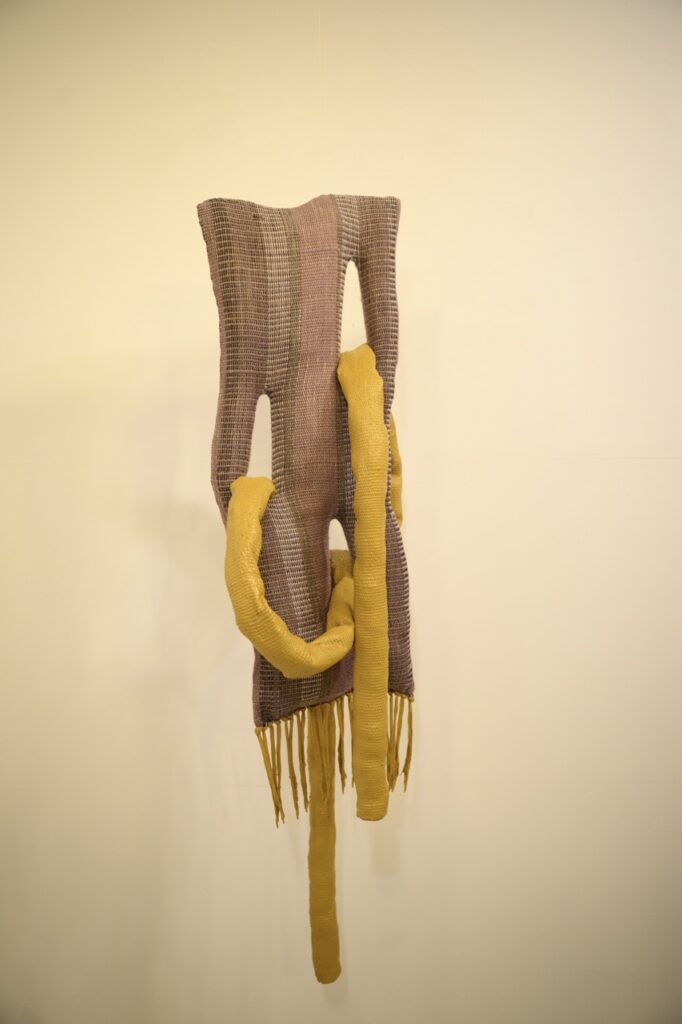
A woven sculpture by Stefanie Zito.
When not weaving and using found or repurposed material, she is layering the cast-off pieces into her work. Her quest? To see how things relate and to work with elements of order and chaos. “I want my art to represent the cycles of life and the fading and passing of people and time,” she says.
Gifting Old Materials a New Life
Stefanie says art has always been a constant in her life. “I have had so much change in my life, so there have always been inconsistencies. Art was always what was available,” she says, adding that even her mom intuitively always knew to ask first before throwing something out. “She’d say, ‘I’m throwing out boxes, do you want to make something?’”
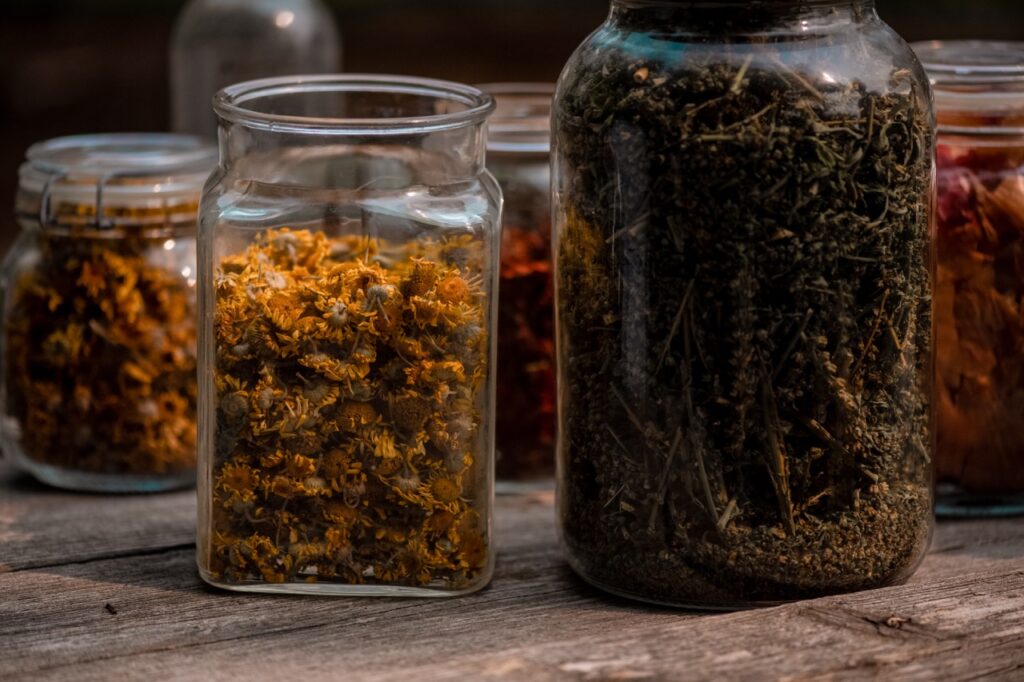
Natural dyestuffs waiting to be deployed.
As a mixed media artist who continues to draw inspiration from ecology, Stefanie also weaves themes of relationships linking her art to her physical surroundings. On her website she says her work is “materials-led, exploring ideas of home and the substance of time,” utilizing slow and traditional domestic practices like spinning, stitching, cooking, gardening, and weaving, deconstructing and reimagining both natural and commonly discarded materials, exploring what it means to inhabit space and cultivate growth. “I think if we could all get to a place of observing and then interacting, we’d be more sensitive to our impact on the planet and each other,” she says.
Story by Amy Dufault
Photography by Jeff Swensen
Subscribe to TABLE Magazine’s print edition.
